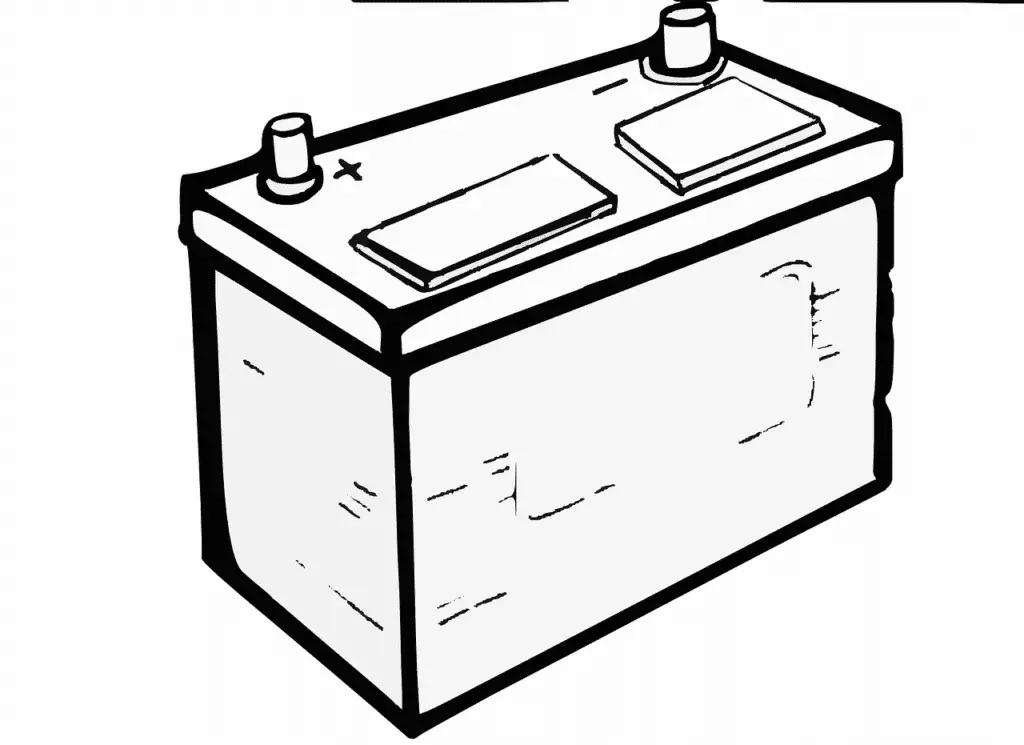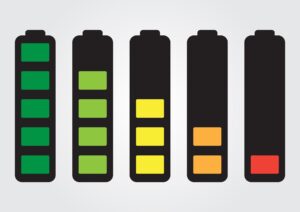
Most car batteries have 48 amp hours and the range for Common Cranking Amps is about 500-1000 amps for most vehicles batteries. The Cold Cranking Amps is better known as “CCA.” The amperage of a typical 12-volt car battery is measured in CCA. But to make things more complicated there’s also the battery Reserve Capacity (RC).
It is hard to talk about electronics if you’re not familiar with terms such as amps, volts, and ohms. In this article, my goal is to simplify the ins and outs of a car battery and talk about car battery amps.
What is the CCA or Cold Cranking Amps?
The CCA or Cold Cranking Amps is easy enough to understand. Simply put, the CCA is the maximum amount of amps the battery (12-volt usually) can pump out for 30 seconds at an ambient temperature of zero degrees Fahrenheit.
Whew, that’s quite a mouthful, right?
But when you think about it, the CCA is actually a measurement of how much electrical power it can crank out for 30 seconds before it runs flat. Think about starting a car in the dead of winter.
Let me rephrase that for you. Car batteries with a higher CCA means greater starting power. So if you got a sports car like that beautiful Corvette C5, you need a battery with enough juice to start that Ls1 V8.

Now think about this again for a second: when you start the vehicle, the battery not only needs to supply the starter with maximum power. It also needs to send electrical power to the vehicle CPU, fuel pumps, injectors, and dashboard instruments. If the battery is not fully charged, unable to hold a charge, or is incapable of supplying a large amount of current upon starting the vehicle, the motor won’t turn. This is bad news, more so if you’re stuck in a cold winter morning.
Conventional sedans and compact cars are usually equipped with car batteries with a CCA of 400. Larger vehicles such as pickups, SUVs or diesel-powered trucks can have anywhere from 800 to 1,500 CCA. If you live in places with harsh winters or extended cold spells, you should seriously consider a car battery with a higher CCA. Check out this article if you need more details on choosing a good car battery.

What is the battery reserve capacity?
It is hard not to talk about car battery amps without mentioning the battery reserve capacity. Since the amps in a car battery is rated in three different categories (CCA, cranking amps, and reserve capacity), it is important to discuss what this means when buying a new car battery.
Did you know that in a pinch you can charge your laptop with your car battery?
The battery reserve capacity means how long the battery can be discharged at a rate of 25 amps. The reserve capacity is also measured at an average temperature of 80-degrees Fahrenheit and is measured in minutes. For example, if the reserve capacity or RC rating of a car battery is rated at 120, this means the battery can provide 25 amps for 120 minutes before it begins to lose valuable power to start the vehicle.
Pro tip – Looking for a good replacement car battery? Check out our Optima Redtop review
How long to charge a car battery at 2 amps
The answer will depend on the type and capacity of the battery. Since we’re talking about car batteries, let’s use it for another example. Car batteries will typically have a capacity of 48 amp hours. What this means is a fully-charged 12-volt car battery rated at 48 amp hours can deliver 1 amp for 48 hours or 2 amps for 24 hours. This also means the battery can supply 8 amps for 6 hours under ideal operating conditions.
With that being said, a basic car battery charger at 2 amps will fully charge a flat or empty 48 amp hour battery in 24 hours. Of course, if you’re working with a partially discharged battery, the charging time will vary depending on the condition of the battery and the amount of charge left in the plates.
Learn more about car battery charging by watching this video by JP Auto & Fleet Services:
Is it possible to use a charger with higher amps?
Yes. Some chargers are capable of charging a car battery at 3 to 10 amps. Using a charger with a higher output will result in faster charging times. However, fast or super-fast charging is not recommended because it can cause irreparable damage to the battery plates.
For example, if a 2 amp battery charger can do the job in 24 hours (in a 48 amp hour car battery), using a 4 amp charger will cut the charging time in half.
How do I connect a battery charger to my car battery?
These are the simple steps on how to connect a battery charger to the car battery.
- Stop the engine, remove the keys, and pop the hood open. Make sure to park the vehicle in a safe and level area.
- You can either remove the battery from the vehicle, or leave it in the engine bay but with the battery terminals disconnected.
- Check the electrolyte level of the battery before proceeding. Remove all the cell caps and refill with distilled water when necessary. Do not overfill the battery with distilled water! Pay attention to the water level indicator.
- If you are using a charger with more than 2 amps, it is better to remove the cell caps as the battery is being charged. This will provide the necessary ventilation. But this only applies if the charging rate is higher than 2 to 4 amps.
- Clamp the positive (+) lead to the positive terminal (red), and clamp the negative (-) lead of the charger to the negative battery terminal (black). Do not interchange the leads!
- At this point, all you need to do is to plug the charger in the mains and turn the charger ON. If the charger is equipped with a gauge or ammeter, you can easily see the battery is being charged. Of course, the charging time will again depend on the current state of charge, the size or capacity of the battery, and the charging capacity.
As an added note, pay attention to the bubbles in the cells in the final stages of the charging process. If a particular cell begins to emit gas ahead of the other cells, or if one of the cells are bubbling more aggressively than the other cells, this means the battery is defective and will need to be replaced.
Main Image by Clker-Free-Vector-Images from Pixabay